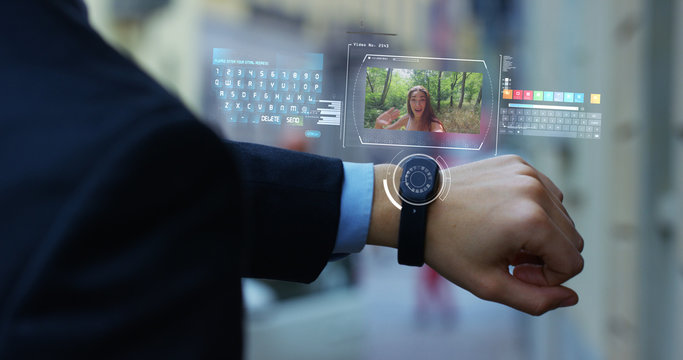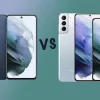Introduction In recent years, the world has adapted to new ways of working, learning, and socializing online. Platforms like Zoom have become everyday tools for Remote Collaboration and staying connected with colleagues or friends. Yet, as valuable as video calls are, people sometimes wish for a more lifelike way to interact. Nobody wants to stare
Introduction
In recent years, the world has adapted to new ways of working, learning, and socializing online. Platforms like Zoom have become everyday tools for Remote Collaboration and staying connected with colleagues or friends. Yet, as valuable as video calls are, people sometimes wish for a more lifelike way to interact. Nobody wants to stare at flat grids forever. This is where holographic communication steps into the picture. Imagine seeing the person you are talking to as a 3D image, standing or sitting right next to you, without any clunky headsets.
It sounds like something out of science fiction. Yet, 3D telepresence and real-time holograms are increasingly being tested in boardrooms, conference halls, and even medical labs. They promise a more natural way to speak, read body language, and connect in real time. Instead of a one-dimensional chat window, you can enjoy the freedom to move around and see your contact’s expressions from different angles. If this technology continues to evolve, it might indeed end the era of Zoom calls, or at least upgrade our idea of what a virtual meeting can be.
What Is Holographic Communication?
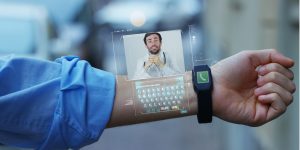
Image by: Yandex.com
Holographic communication involves the creation of three-dimensional, life-size images of people or objects, projected in real time to another location. Unlike video conferencing, which places participants in two-dimensional windows on a screen, holograms aim to make it seem like the remote person is standing right there in the room.
This system often uses advanced cameras, sensors, and projectors. The cameras capture a person from multiple angles. A special display or projection setup recreates that person as a 3D telepresence. The goal is to achieve a sense of realism, allowing participants to make eye contact and observe subtle facial cues. The entire process relies on powerful hardware, including specialized light field displays. High-speed data networks handle the large volume of visual information required to render these immersive calls.
How Does Holographic Communication Differ from Video Calls?
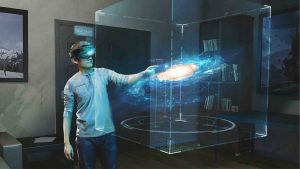
Image by: Yandex.com
At first glance, video calls and holographic communication share a similar purpose. They both let you talk to people far away in real time. But the user experience can be vastly different. Traditional video calls limit you to a flat screen. You see a person from a single viewpoint, and you can only guess how the rest of the room looks. With 3D telepresence, you get more depth and perspective.
In a normal Zoom session, if you lean to the side, your image becomes partially hidden. In a hologram-based meeting, if you walk around your counterpart’s virtual figure, you would see different sides of them. Some systems might track your position and adjust the projected perspective accordingly. This creates a sense of true presence that is missing from a standard video feed.
Key Applications and Use Cases

Image by: Yandex.com
Many fields could benefit from the future of video conferencing that holograms suggest. For example, in medicine, a specialist could appear virtually alongside a local physician to consult on a patient’s case, pointing to X-rays or scans in real time. This could vastly improve remote surgeries or training sessions, where precision matters.
In education, a renowned professor could holographically visit classrooms around the world, interacting with students more dynamically than a flat video feed allows. Students could ask questions face-to-face, seeing the professor’s reactions from multiple angles, fostering a more interactive learning environment. Museums might host guest speakers who appear as real-time holograms, adding a futuristic flair to their events.
Table: Comparing Video Calls vs. Holographic Communication
| Aspect | Traditional Video Calls | Holographic Communication |
|---|---|---|
| User Experience | Flat windows, limited perspective | 3D views, life-size presence |
| Data Requirements | Moderate bandwidth | High bandwidth, advanced hardware |
| Nonverbal Cues | Partially visible, can be missed | More natural body language, real-time |
| Group Interaction | Often limited to a screen grid | Circle formation, better spatial sense |
| Equipment Complexity | Webcam, microphone, stable internet | Specialized cameras, projectors, sensors |
| Immersion Level | Basic virtual meeting environment | Highly immersive, realistic feel |
This table highlights some core differences that illustrate why holographic communication could represent a big shift in remote interactions.
Challenges and Practical Considerations

Image by: Yandex.com
Despite all the excitement, there are still barriers to widespread adoption of holographic communication. First, the costs associated with capturing and projecting lifelike holograms remain high. Specialized gear is needed on both sides, so both the sender and receiver must invest in equipment. This could be a major obstacle, especially for smaller companies or institutions without large budgets.
Network infrastructure is another concern. 3D telepresence requires huge amounts of data. Latency issues could disrupt the illusion, causing lag or jittering that spoils the experience. While next-generation 5G and fiber networks promise faster speeds, these networks are not yet universal. Many areas still lack stable broadband, let alone the advanced connectivity needed for consistent real-time holograms.
Ethical and privacy considerations also come into play. If the technology gains momentum, we will need to handle data security. A hacked holographic feed could be more alarming than a typical Zoom intrusion, as the sense of presence is stronger. Another question arises over how to store or regulate these 3D recordings, since they capture more detail than standard video. Addressing these concerns early on can ensure that holographic communication does not just vanish due to misuse or distrust.
Is This the End of Zoom Calls?

Image by: Yandex.com
The idea of the “end of Zoom calls” might be premature. Conventional video conferencing is simple and cost-effective. It runs on many devices without extra gadgets. People have become comfortable with it, especially after years of remote work and hybrid events. However, holographic communication could certainly become a premium option for certain industries or high-stakes interactions. Over time, as costs drop and technology evolves, it might move from novelty to mainstream practice.
In some scenarios, a quick Zoom call will suffice. It is convenient and easy to set up. In other cases, an immersive hologram can foster stronger personal connections, help with detailed training, or elevate a major keynote speech. Rather than completely replacing video calls, 3D telepresence is likely to exist alongside them. Users may choose the format that best suits their needs for each type of meeting or event.
We saw a similar pattern with text messaging and voice calls. Instead of voice calls disappearing when texts arrived, people just gained another way to communicate. The same logic applies here. Zoom calls or equivalent platforms are not going away, but they could lose ground in areas where an in-person feel is more valuable.
Future Outlook for Holographic Communication
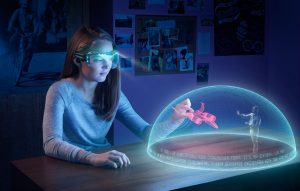
Image by: Yandex.com
Over the next decade, we can expect progress in design, cost reduction, and user-friendliness for holographic communication solutions. Software might become more efficient at compressing the data needed for these calls. Hardware setups could shrink, making them easier to integrate into office spaces or living rooms. AI might also help fill in missing viewpoints, enhancing the realism of the hologram with fewer cameras.
The gap between in-person and remote collaboration might shrink, letting people worldwide collaborate as though they share a single space. This shift could benefit businesses with remote teams, telemedicine, education, and cultural exchanges. As the climate crisis pushes organizations to limit business travel, advanced remote collaboration can deliver the face-to-face feel without the carbon footprint of flights.
Conclusion
Holographic communication signals a groundbreaking shift in Remote Interaction. Its 3D telepresence offers a closeness unmatched by standard video calls. While cost, infrastructure, and privacy issues remain hurdles, ongoing tech improvements could make real-time holograms more practical. Instead of fully replacing Zoom calls, this technology might sit alongside them, chosen for important meetings, in-depth training, or events that require a deeper connection.

